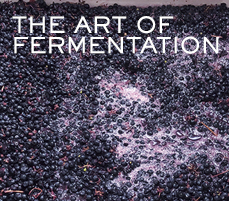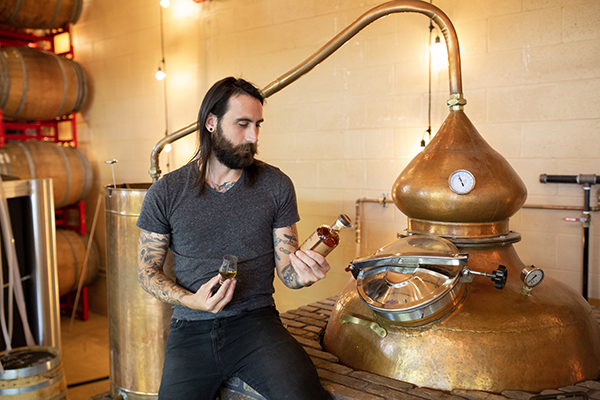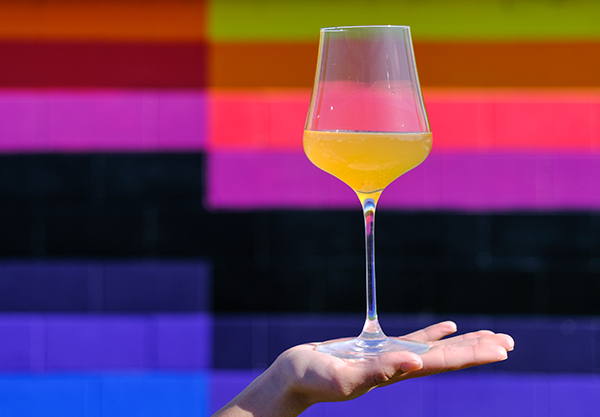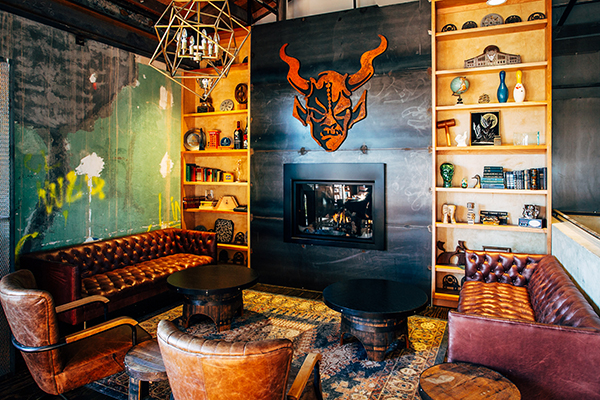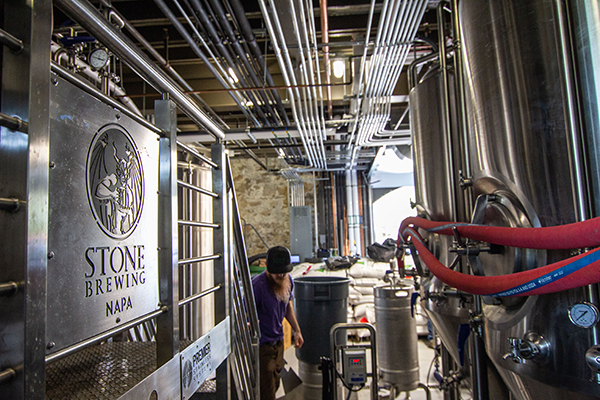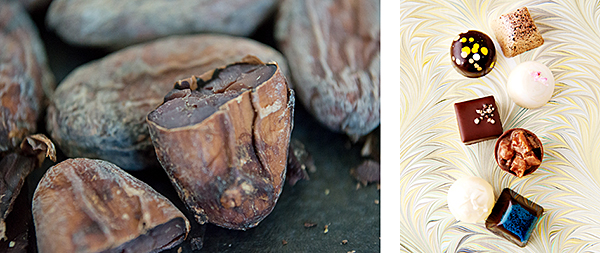The Art of Fermentation
From wine, beer and spirits to kombucha and vinegar, we’re uncovering the science of Zymology and how it creates the food and drinks you love.
During harvest, go behind any winery cellar door worldwide and your nose will instantly pick up the tangy, yeasty smell of just-picked grapes transforming into wine. The heady scent is unmistakable—and wonderful—because it signals the next step in the winemaking process called fermentation has begun. Zymology, or the workings of fermentation, is an applied science which studies the biochemical process of fermentation and its practical uses. And the actual biological process of fermentation (converting sugars into acids or alcohol) takes place with the help of bacteria or yeast.
Any winemaker who has studied at an ag-focused university, like our top-rated University of California Davis here in Northern California, will have learned about the fascinating subject of fermentation when achieving their Enology degree, the science and study of wine and winemaking. To get the process of fermentation started, some winemakers prefer to use the naturally occurring yeast in the vineyards called “native” or “wild yeast”, which is airborne and on the skins when the grapes when are picked. Others prefer to inoculate their grapes with a cultured yeast strain which is more predictable and will have proven over several vintages to result in a specific flavor profile that best suits the winemaker’s palate. With “wild yeast”, it is a bit of a gamble each year as to how the on-board yeast will co-mingle the other characteristics of the grape such as its varietal, clonal selection, soils, and that particular season’s climate. But therein lies the beauty. Capturing the unique expression of the vineyard’s personality, the terroir if you will, with the help of yeast selection (cultured or native), gives each vintage its distinctive aroma, flavor, body and finish, making no two vintages identical in taste.
The art of fermentation goes far beyond wine however. In order to make beer, or whiskey or sauerkraut, you need fermentation. So let’s explore a few of the most popular fermented foods and drinks found here in Napa Valley, and offer you a primer of how each one is produced using their method of fermentation.
Napa Valley Distillery
The first distillery to open its doors in the city of Napa since Prohibition, Napa Valley Distillery is family-owned and operated by husband-and-wife team Arthur and Lusine Hartunian. Founded on the core principal of making their small-batch spirits different by distinguishing their flavor profiles from all the rest, the distillery crafts a wide range of whiskeys, gins, vodkas and more– each with a unique taste and character. They also make their own bitters and syrups for sale, along with other cocktail accessories, at Oxbow Public Market in downtown Napa. The quality of the raw ingredients used in the fermentation process has helped the distillery win numerous awards and receive international acclaim.
Napa Kombucha Company
Founded by Napa natives and brothers, Ethan and Jordan Speizer, Napa Kombucha will be the first kombucha producer in Napa Valley. They’re in the process of setting up shop in an old tea brewery, making their kombucha company’s infrastructure all that more streamlined. After completion of their construction this Spring, production is slated to start in early Summer. Using Ethan’s background as a chef, the pair are approaching their production much as a winemaker would: by sourcing the highest quality ingredients and treating them with the utmost respect. This attention to process, along with a combination of neutral oak wine barrels and stainless steel, gives their kombucha its unique and deep flavors. “Tea is the most important ingredient in producing great tasting kombucha, which is why we source unique, single origin teas from the best tea growing regions in the world. Our small batch brewing process ferments each bottle individually- creating a nuanced and natural kombucha with some variance between bottles. Our kombucha will also be slightly alcoholic, about 2% alcohol – which is the result when you brew kombucha the natural way, without manipulating the product. We hope to create a beverage one can drink before, during, or after a meal….together with wine & beer, or in lieu of. Kombucha is manufactured differently than beer and wine with a much lower alcohol content, typically 1%-2%, versus the regulatory minimums of 5% for beer and 10% for wine. The lower alcohol content allows for more of the tea’s flavor profiles to shine through and of course, avoids the tipsiness when consuming them. Look for their range of kombuchas at local restaurants and markets later this summer. For more information on their products, visit napakombucha.com.
Stone Brewing Company
Marking the second anniversary for Stone Brewing in its Napa location this May, the addition of the iconic brewer to the Napa Riverfront location could not have been more anticipated. Their roots in brewing go back to 1996 when they started their company with the sole mission of challenging the status quo. From the get-go, Stone Brewing’s commitment to using the highest quality raw ingredients, non-pasteurization and being additive-free, along with bold marketing and eclectic imagery immediately turned this small operation based in Escondido (San Diego County) into the country’s 9th largest independent brewer. Still maintaining its cult status as they grow, the company has expanded to Virginia where they are now serving up their signature IPAs on both coasts, and continuing to grow their die hard following, pint by pint.
“Fermentation is a huge focus for us here at Stone. We maintain and manage our own ale and lager house cultures, and propagate them ourselves in our laboratory. In addition, we've been having a ton of fun with some new yeast types, such as fruity Kveik, used in our Stone Neverending Haze Session IPA. Additionally we’ve got a new lager yeast for us which we used in Stone Buenaveza Salt & Lime Lager, and a new farmhouse yeast we've been using in Napa for a while, that we used in Stone 02.02.2020 Epic Palindrome Ale. So many other fun trials going on right now, including our Napa Borreo Gose series, which is using a small amount of wild fermentation to make a really awesome balanced series of fruited sours.”
—Steve Gonzalez, Senior Manager of Brewing and Innovation and Head Brewer at Stone Brewing Napa
Many chocolate lovers aren’t aware that cacao pods, from where chocolate as we know it originates, is actually a fermented food. Harvesting the pods is done by the skilled hands of workers on the cacao farm using short, hooked blades or longer handled machetes if the fruit is up high in the plant. The thick outer shell of the pods is opened to reveal the pulp-covered cacao beans which are scooped out then gathered onto the ground in large heaps or in long trays, then covered with banana leaves to begin fermentation. The degree to how long the beans are fermented (typically between 4–10 days) will determine the final taste of the chocolate. The shorter the fermentation, the milder the bitterness. As like wine, the different varieties of beans will have unique and inherent flavor profiles which help guide the chocolate farmer on the proper length of the fermentation process. Once fermented to the desired color and flavor, the beans are dried in the sun, then packed in burlap sacks and shipped worldwide to cocoa processing facilities to grind and melt into bars, nibs or discs for chocolatiers to create their tasty confections. You can sample a variety of bean-to-bar chocolates, bonbons, truffles and more at numerous artisan chocolatiers throughout Napa Valley.
If you’re in St. Helena, stop in to Woodhouse Chocolate where their handmade confections are displayed in cases like pieces of fine jewelry and presented in their signature blue boxes. Using local ingredients and single-origin chocolate, their collection of sweets is not only a feast for the eye but also the palate.
Kollar Chocolates in Yountville is the work of master chocolatier, Chris Kollar, named ‘Top 10 Chocolatiers of North America’ by Dessert Professional Magazine. His works are not only indulgent, but true artistic masterpieces of shape and color.
A hidden gem tucked away in the Brown’s Valley suburb of Napa, La Forêt Chocolate is the home of Wendy Sherwood’s seasonal collections available in her tiny small-batch shop. Classically trained at Le Cordon Bleu in Paris, the former pastry chef at French Laundry crafts divine bonbons, caramels, toffees and more. Her Allocation boxes offers those outside Napa Valley the ability to savor her most special and limited-release delights in a 25-piece box, shipped seasonally and only to those on the Allocation list. If you’re put on the waiting list to receive the Allocation, be patient, it’s definitely worth the wait!
